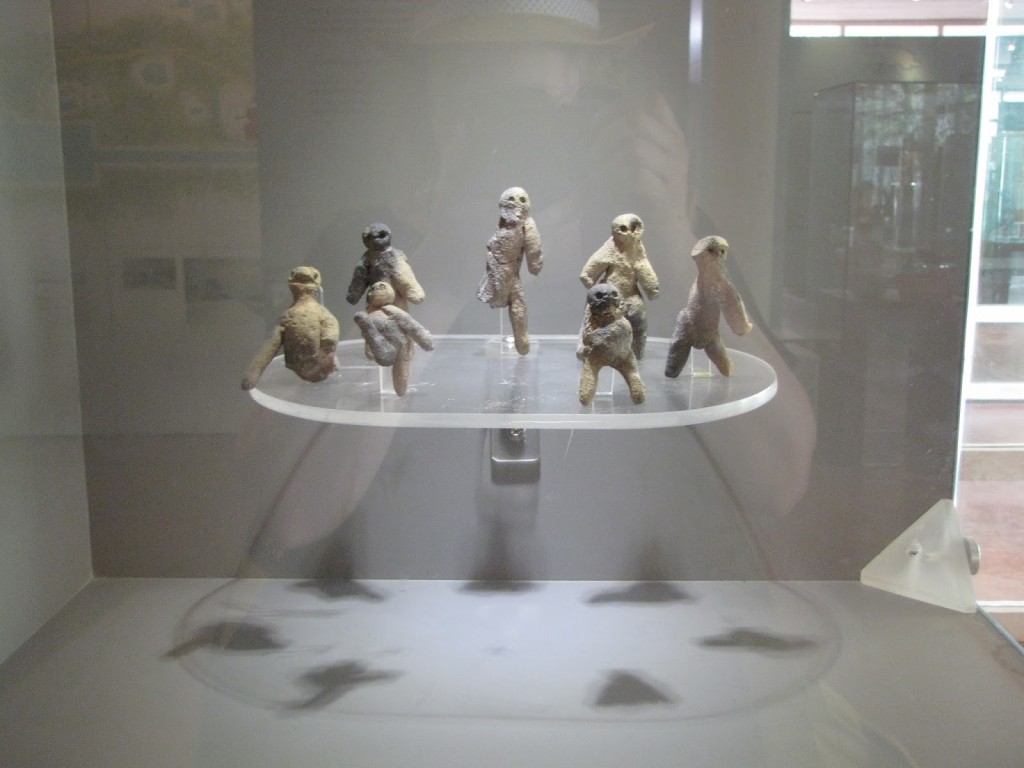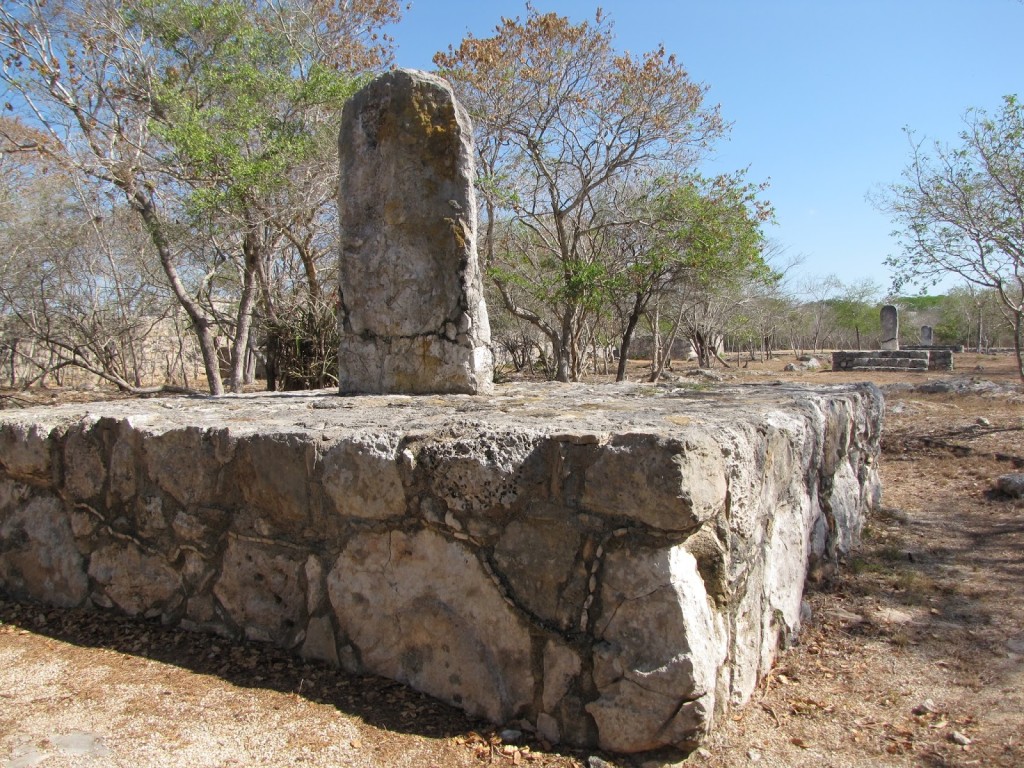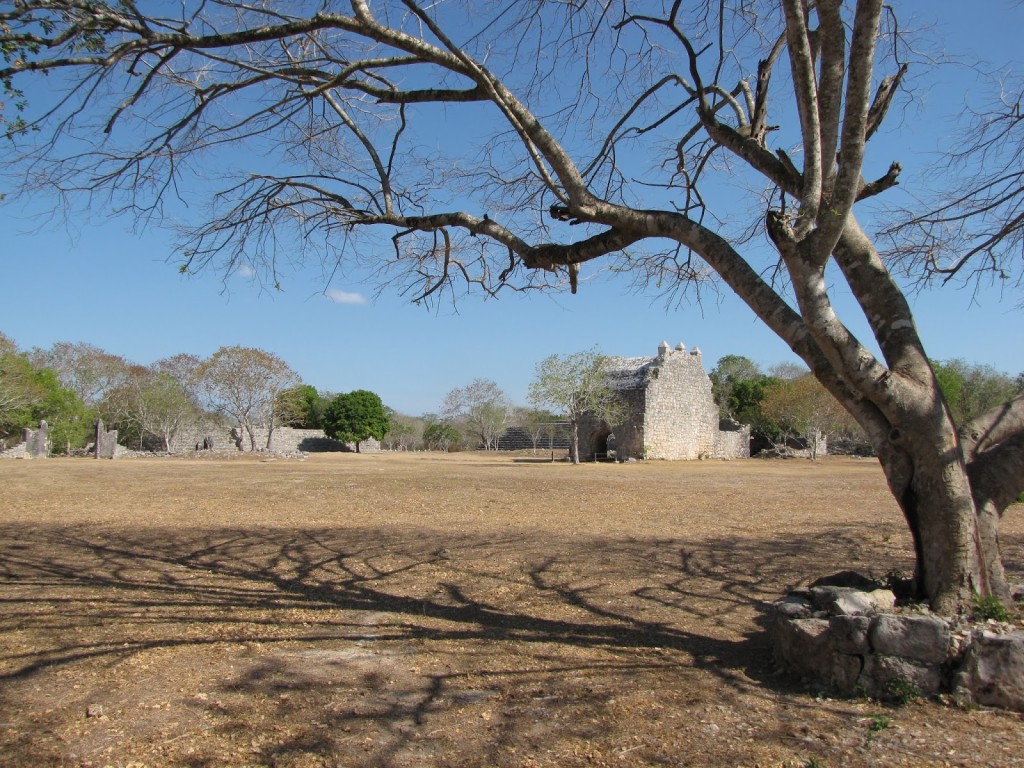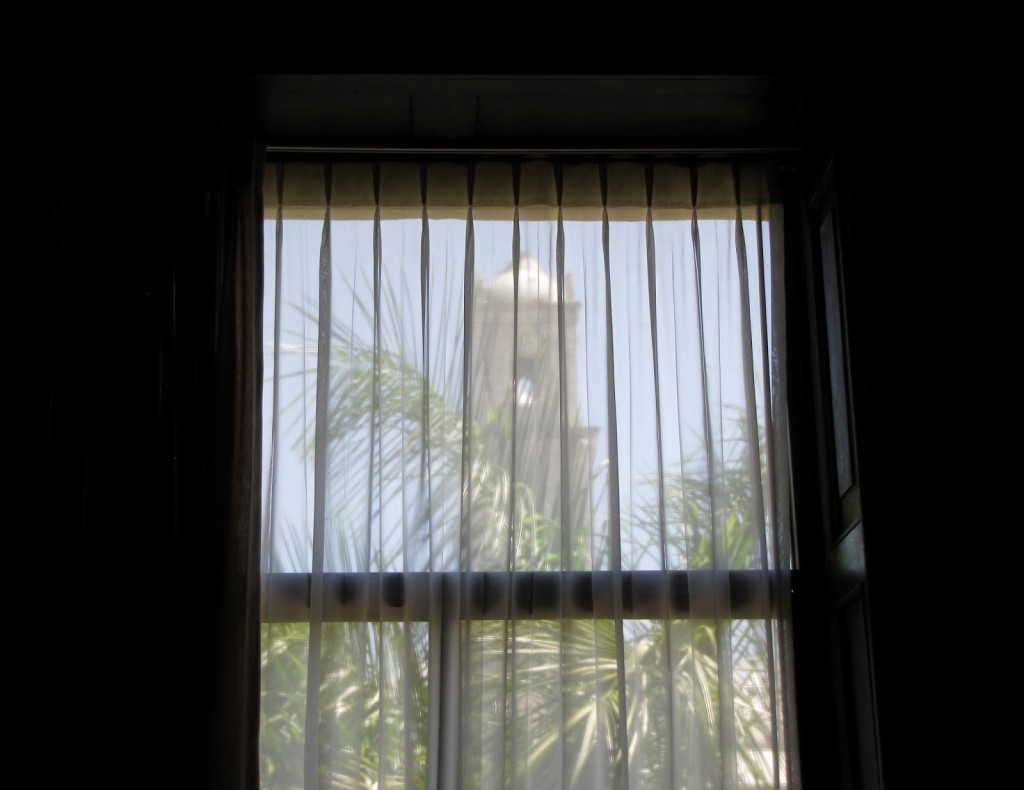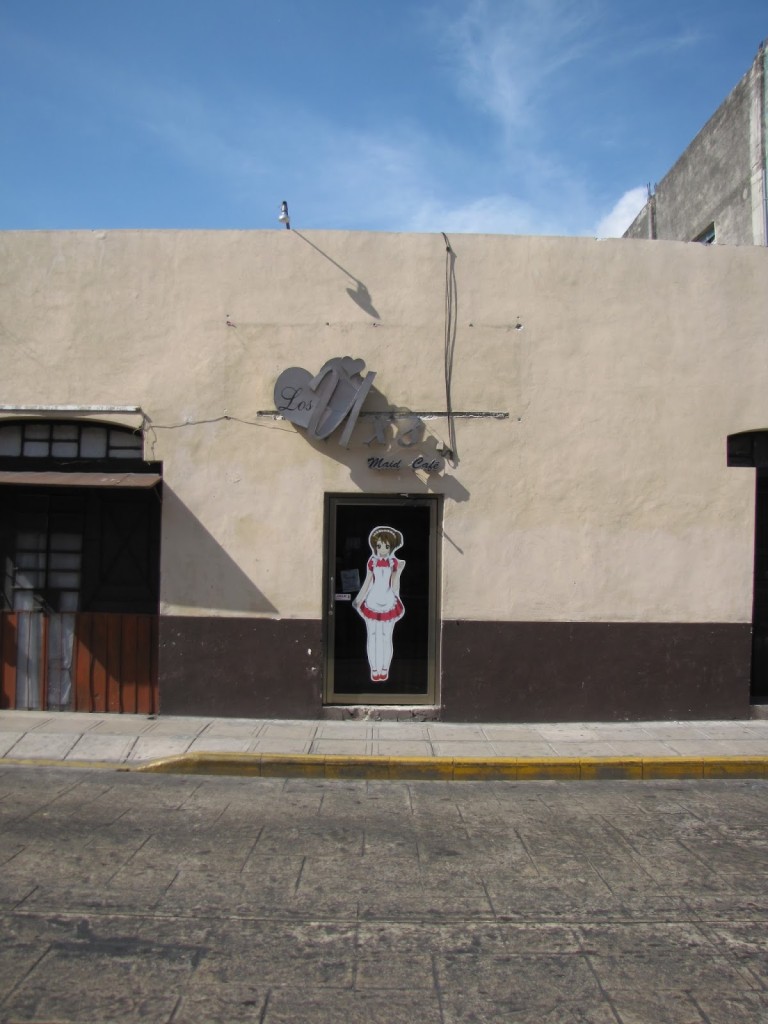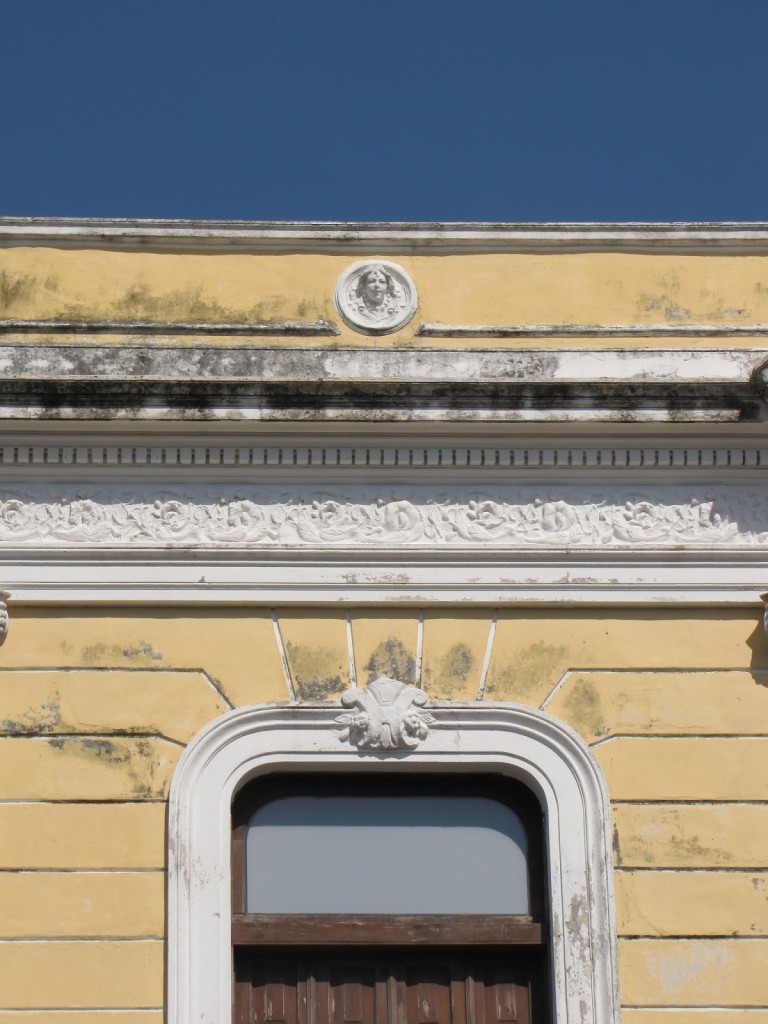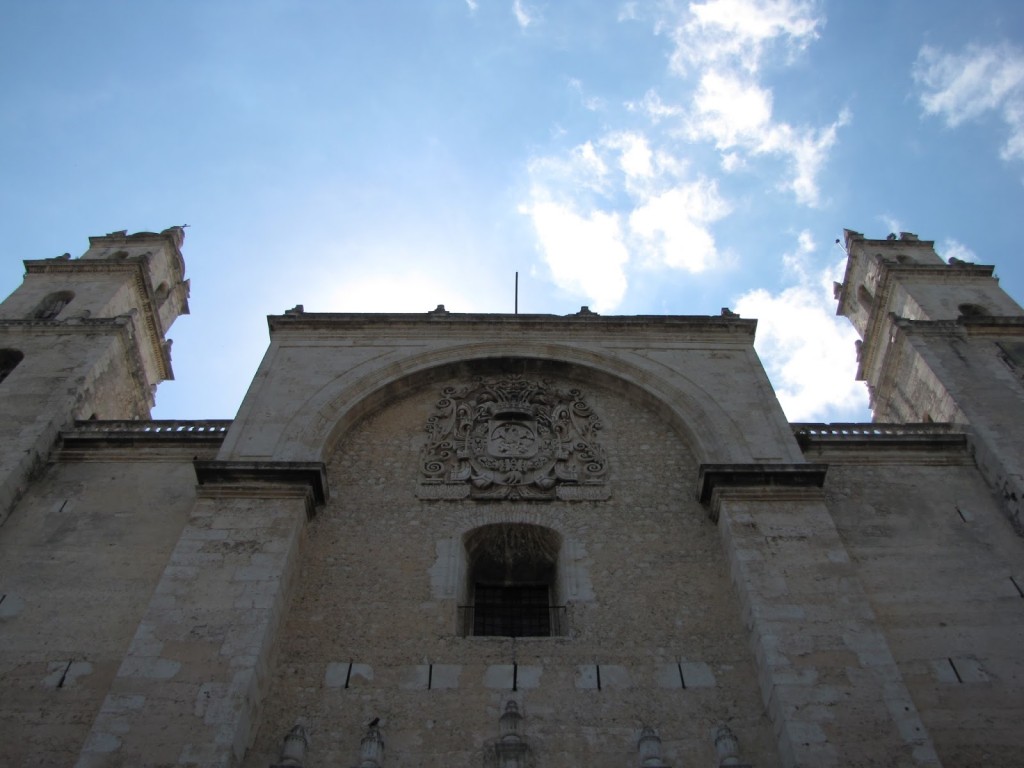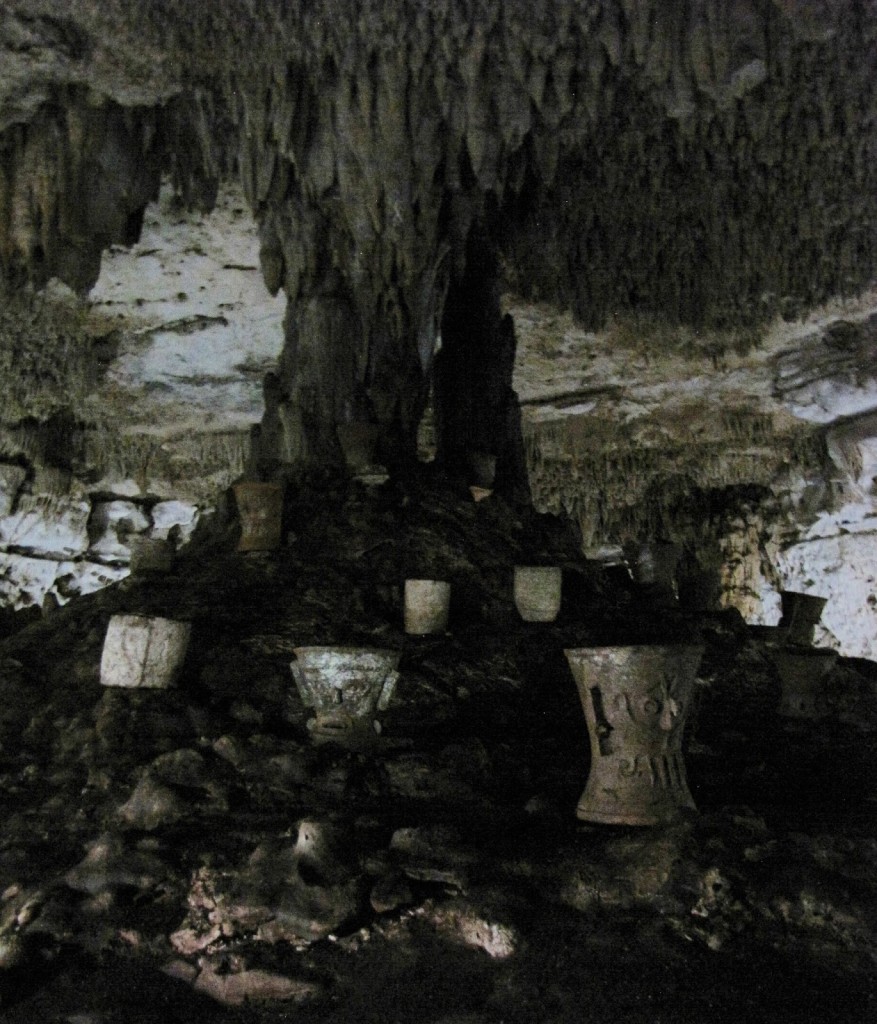On the morning of our first full day in Mérida, we hopped back in the car and headed north of the city to Dzibilchaltún.
Located on a hot, dry plain about 22 km south of the coast, Dzibilchaltún has the honor of possessing the least picturesque ruins of the 20-plus Maya sites we visited. However, what the destination lacks in architectural or decorative splendor it makes up for in historical importance and, thanks to its cenote, natural beauty. The on-site museum—which consists of both indoor and outdoor displays of artifacts, stelae, and anthropological installations—is also quite good and added significantly to our appreciation of the site.
First occupied around 800 BCE, Dzibilchaltún was one of the earliest major settlements on the peninsula. As a result, some of the oldest known ceramics of the region come from here. The local economy was based on salt trade, and the relative strangeness of the city’s location—which is both inhospitable and fairly far from the sea—can be understood as a compromise between finding land that was capable of supporting a minimal amount of agricultural cultivation while simultaneously as close to the salt-producing coastal lagoons as possible. Of course, the presence of a cenote, offering fresh water in an otherwise arid environment, would have been a key factor in the choice of locale as well.

At one end of the traversable ruins stands the site’s most iconic building, the Temple of the Dolls. Named for the seven, rough, ceramic figures once buried in front of its altar and now on display in the museum, the temple sits in near isolation at one end of a large, open plaza. Doors located at the center of each of the sanctuary’s four walls heighten the effect of the square building’s rather unusual radial symmetry, while skeletal remnants of Chaac masks sit above these entrances and at the roofline’s four corners. Like many surfaces at the site, the masks (and numerous nearby stelae) were once covered in sculptural, painted stucco. Archaeologists have discovered graffiti inside the temple as well, some of which may date to 1200–1520 CE, when Maya pilgrims reopened and restored the sanctuary. Unfortunately, the building itself is no longer accessible and must be appreciated from a distance.
Running east-west, a long, straight sacbe connects the Temple of the Dolls to Dzibilchaltún’s central square. Visitors can either follow this road to the rest of the site or walk along a parallel (and more shaded) path part of the way. Those who take the sacbe will also pass another, circular trail that leads to very little.
The central plaza consists of a few, spread-out structures, including a small pyramid, an open Franciscan chapel, stone bleachers, and a gateway. On the other side of the gateway lies the Xlacah Cenote, perhaps the site’s greatest highlight.
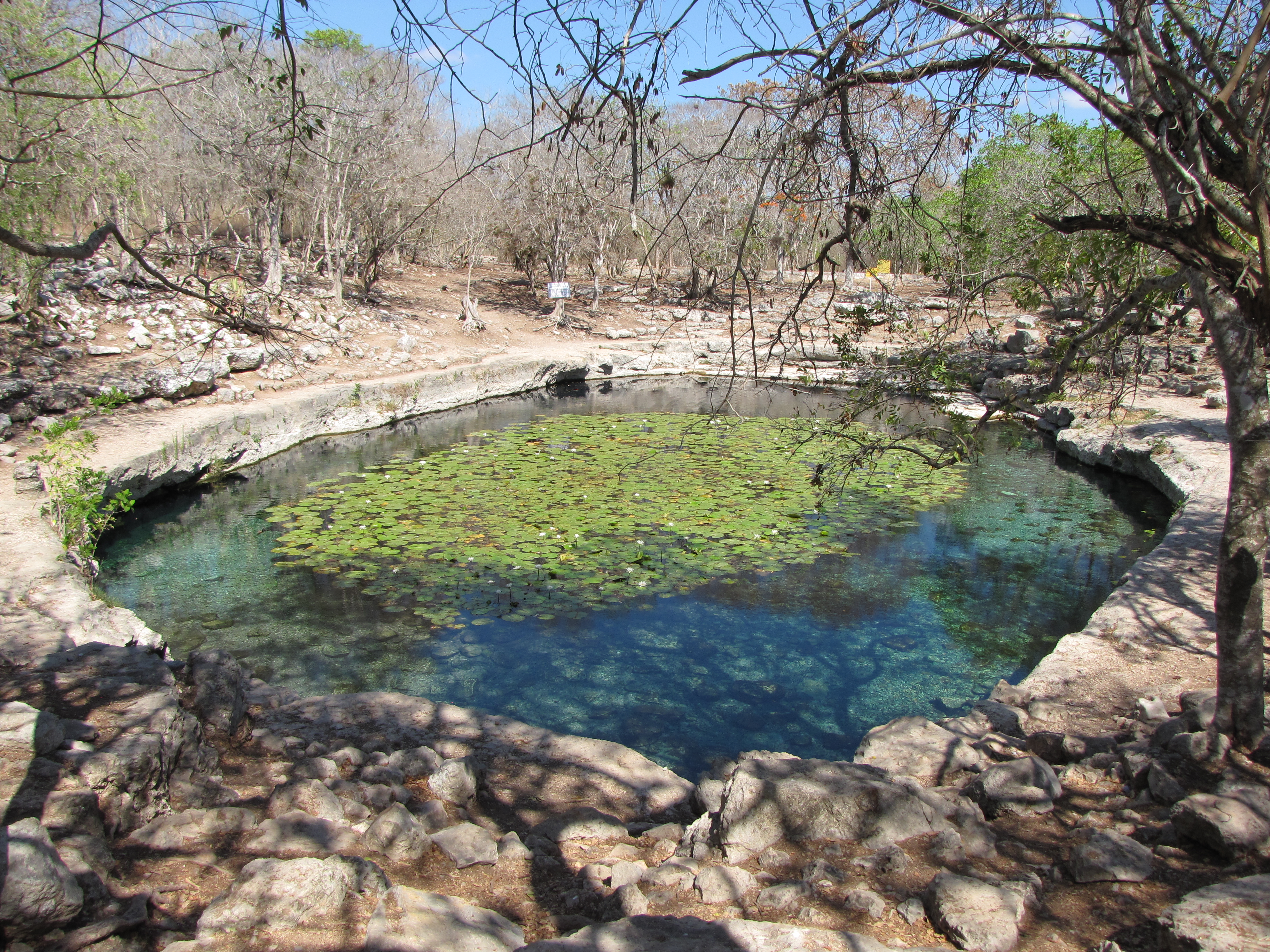
Swimming is allowed, albeit “at your own risk,” but there is no changing room or shower on the grounds.
As an oasis in an otherwise parched landscape, the water here is teeming with life. During our visit, the pool seemed especially hospitable to lily pads and various fish, the latter of which struck us as a little too eager to swarm a bit of flesh and check it for possible food. We spent the majority of our time at Dzibilchaltún admiring the cenote and its surrounding flora and fauna, but left the swimming for another day.
Although I don’t imagine myself returning to Dzibilchaltún, the cenote and museum alone made it worth a visit. If you go, arrive early to beat the tourist groups bused in from Mérida. There is no escaping the sun, so having a hat, sunblock, and plenty of water is especially important here.
Highly subjective personal rating: 7/10
[ruins: 5/10; cenote: 8/10; museum: 8/10]
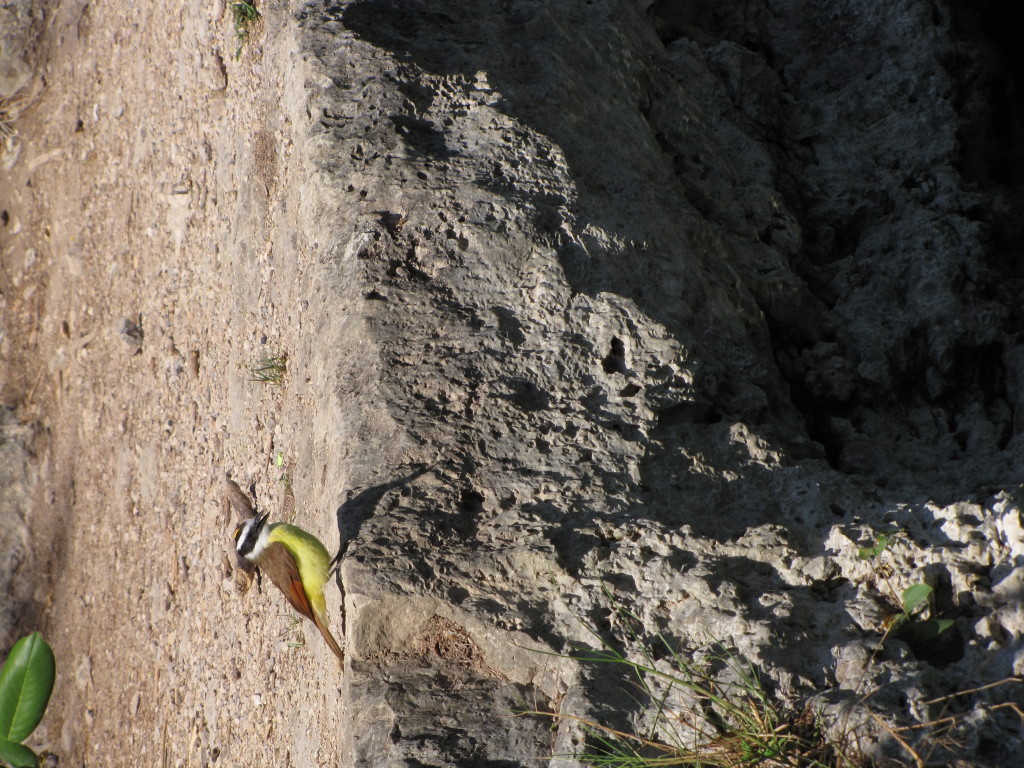
All photos by Renée DeVoe Mertz, May 21, 2015.


